KINGSTON Class Electronics Fit
RADIO ANTENNAS - OVERVIEW
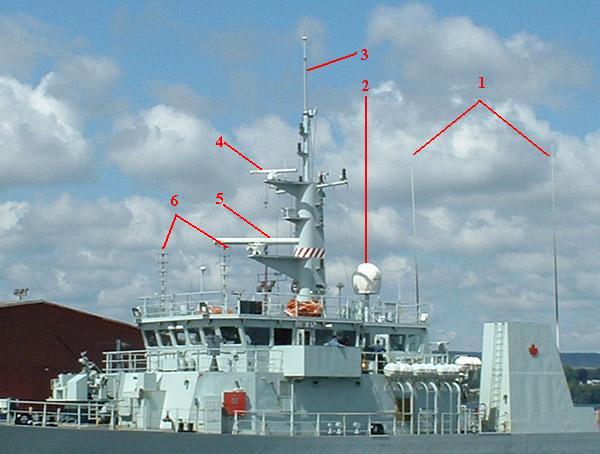 |
| Photo # Radio Ant 1. RADIO AND RADAR FIT: 1- 35
ft. HF Whips;
2- INMARSAT satellite comms with STU-III
secure telephone capability. 3-UHF pole antenna with type
EA-351 Adcock H-type antenna for Taiyo TD-1520 VHF/DF atop; 4-X
Band navigation radar;
5-S Band search radar; 6- Inverted
cone antennae on bridge top are LF/MF/HF receive. (Photo by Jerry
Proc) |
RADIO CALL SIGNS
The pendants and radio call signs for the Kingston Class
are as follows:
700 HMCS KINGSTON CGJX
701 HMCS GLACE BAY CGAU
702 HMCS NANAIMO CGAV*
703 HMCS EDMONTON CGAW *
704 HMCS SHAWINIGAN CGAX
705 HMCS WHITEHORSE CGAZ *
706 HMCS YELLOWKNIFE CGAY *
707 HMCS GOOSE BAY CGBV
708 HMCS MONCTON CGJC
709 HMCS SASKATOON CGJG *
710 HMCS BRANDON CGJI *
711 HMCS SUMMERSIDE CGJJ
* Denotes West coast assignment.
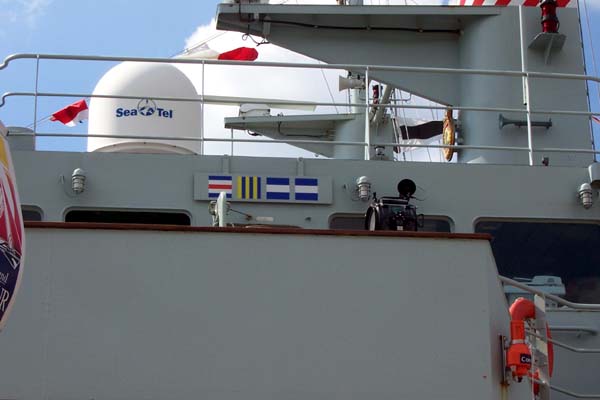 |
| These painted flags show Summerside's radio call sign
as CGJJ. (Photo by Ian Baker VE3OZN) |
MINIMUM EXPOSURE LIMITS AND PRECAUTIONS
When personnel are aloft, the RCN recommends a minimum distance to be
maintained from sources of radio emissions. This is referred to as Minimum
Exposure Level (MEL) and is measured in meters. These are the numbers for
the Kingston Class vessels:
VHF MEL =1 m
INMARSAT MEL = 2 m
M SAT MEL = 1 m
Mini-M MEL = 1 m
Telular MEL = 0.5 m
Marine Mobile VHF MEL = 1 m
For HF whip antennas:
Greater than 600W: After 4 m of the bridge top is denied access.
100W to 600W: After 2 m of the bridge top is denied access.
Less than 100W: Bridge top is unrestricted
Key Returned or Positive Control Evoked
UHF: Key Returned or Positive Control Evoked
S Band navigation radar: Key returned or positive control
evoked. MEL =1 m
X Band radar: Key returned or positive control evoked.
General: Personnel shall not come in contact with long thin vertical
conductors (e.g. crane hook or wire, vertical RAS cables, etc.) when HF
is in use.
The MEL is in accordance with Health Canada's Limits of Human Exposure
to Radio Frequency Electromagnetic Fields in the Frequency Range from 3kHz
to 300GHz, Safety Code 6. This establishes the power levels which are hazardous
to humans in each frequency range. The measurements for each antenna's
MEL distance are done in accordance with Industry Canada's GL-01 document.
DETAILED ANTENNA PHOTOS
 |
| Photo # Radio Ant 2 - Mast fittings- general
view. (Photo by Richard Bungay) |

|
 |
| Photo # Radio Ant 3 - HF Antenna
detail. (Photo by Richard Bungay) |
Photo # Radio Ant 4 - Top: VHF DF antenna for TD-L1520
VHF DF set. Bottom: UHF antenna. (Photo by Richard Bungay) |
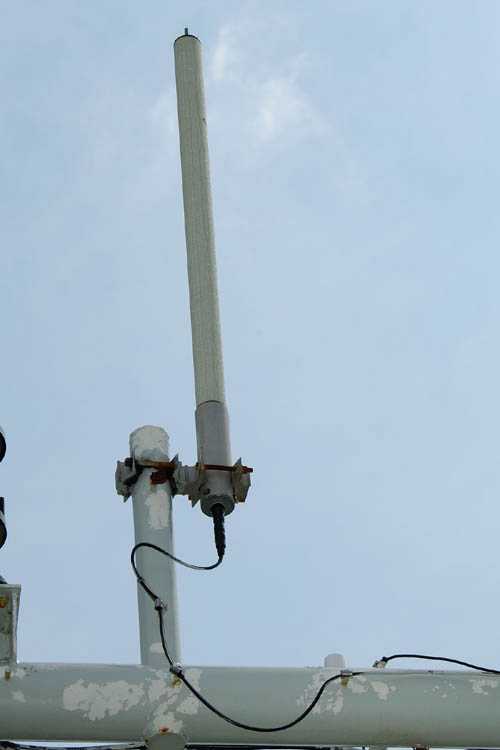 |
| Photo # Radio Ant 5 - Marine band VHF antenna closeup.
Mounted on yardarm, starboard side. (Photo by Richard Bungay) |
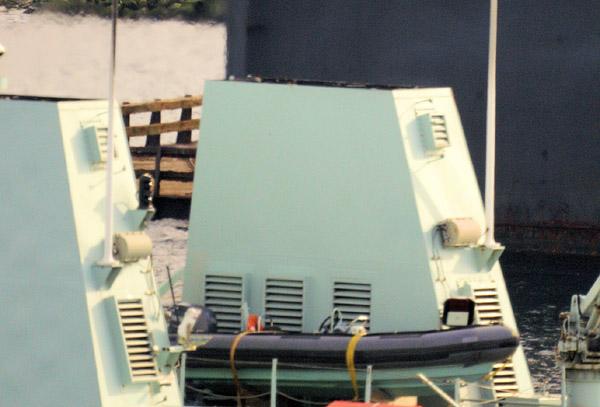 |
| Photo # Radio Ant 6. Each of the HF whip antennas is tuned with
a remotely operated antenna tuner which is fitted at the antenna base.
(Photo by Sandy McClearn) |
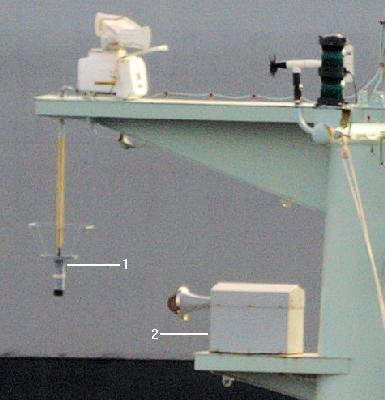 |
| Photo # Radio Ant 10. The white object, upper left corner,
is the X band antenna being viewed on-end. #1 is the antenna for
2128 kHz distress coupled to a Redifon WK2182C receiver. #2 is the
ship's horn. (Photo by Sandy McClearn). |
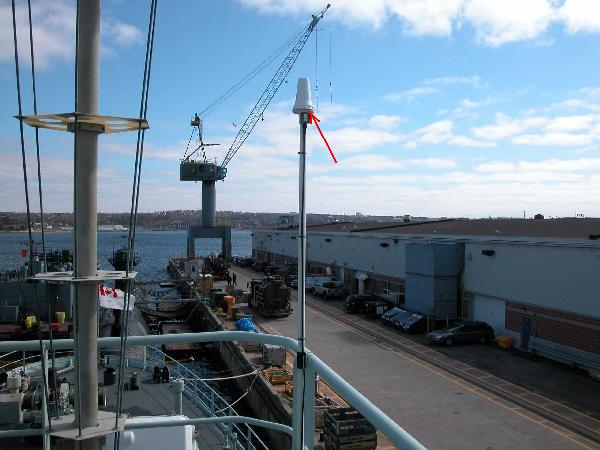 |
| Photo # Radio Ant 11. One of the two Differential
GPS antenna's which are normally installed on the yardarm. On HMCS Summerside,
the DGPS antenna on the starboard side became unserviceable and was installed
in this location as a temporary fit. Because of the cost, it will remain
that way and will be the only Kingston-class vessel to have the antenna
fitted this way. (Photo by Richard Bungay) |
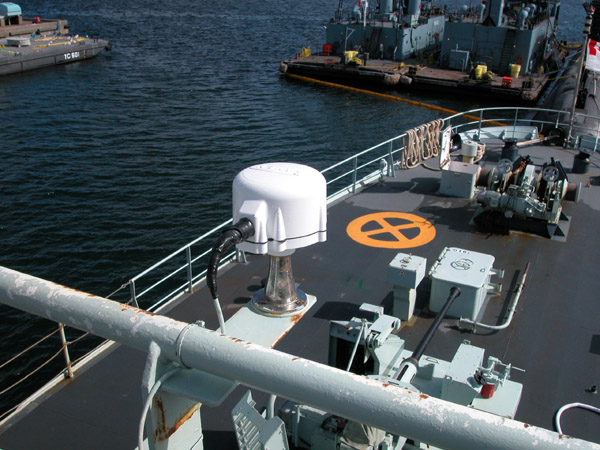 |
| Photo # Radio Ant 12. - SDM (SHINNADS)antenna.
(Photo
by Richard Bungay) |
RADIOS ( there may be others)
* HF Distress - Redifon WK2182C Marine Digital Watchkeeping Receiver
* HF - ??
* VHF - Sailor RT-2047; Icom M601
* UHF - ??
RADIONAVIGATION AIDS
* 2 x MX 300 [3] GPS receivers with HF Differential feed
* Galaxy Trimble INMARSAT C GPS receiver
* RAYNAV 780 Loran 'C' Receiver, however the RCN has discontinued
the use of Loran 'C' as an navigation aid.
ECHO SOUNDER
* Knudsen Engineering Ltd. Model 320M - measures depth up to 2,000 metres.Output
power is 2 kw on a single frequency or 1 kw per channel on dual frequency.
GYRO COMPASS
* Raytheon/Anshutz gyrocompass with 7 repeaters 3 on the bridge,
Ops room, Main switchboard room, bridge wing port an starboard. [no photo
available]
FEATURED EQUIPMENT
Galaxy Trimble GMDSS Inmarsat-C/GPS System
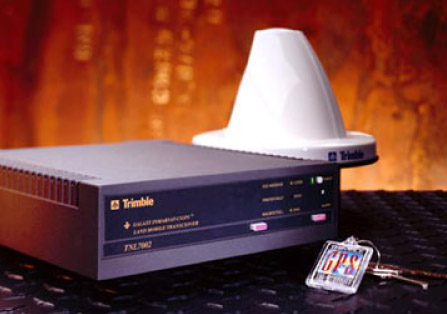 |
The Galaxy Sentinel system transmits between 1,626.5 to 1,646.5 MHz,
receives from 1,530.0 to 1,545.0 MHz at a data rate of 600 bps.(Image
courtesy Trimble Navigation) |
The Galaxy Sentinel is a fully integrated Global Maritime Distress
and Safety System (GMDSS) Inmarsat-C/GPS system. All of the main Sentinel
system components are housed in the Communications Unit enclosure including
the Inmarsat-C transceiver, GPS receiver, computer, display and disk drive.
The printer and antenna are the only other standard components of the system.
An optional remote printer, remote alarm panel and AC/DC power supply are
also available. The Galaxy Sentinel system offers full compliance with
the new Inmarsat CN114 specification and IMO Resolutions A.807(19) and
A.814(19). The Galaxy Sentinel system was only fitted on West coast ships
and only once on HMCS Summerside.
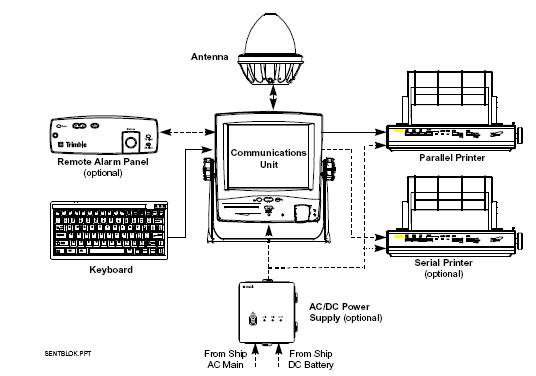 |
| Galaxy Sentinel system block diagram. (Image courtesy
Trimble Navigation) |
Echosounder - 320M
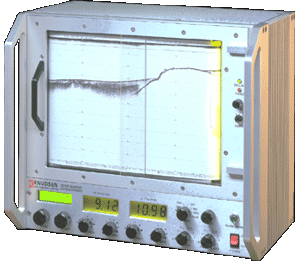 |
Depth Resolution: 1 cm (0-99.99 scale), 1 dm (100-999.9 scale), 1 m
(>1000 scale)
(Photo courtesy Knudsen Engineering) |
RAYNAV 780 Loran 'C' Receiver
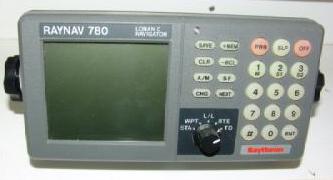 |
| Remote control head for 780 receiver. This receiver was normally used
with an antenna coupler and a 8 to 9 foot whip antenna. Made by Raytheon.
(Photo
via E-bay) |
VHF DF
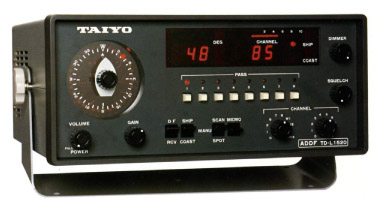 |
| TD-L1520 VHF DF set. FM double superheterodyne DF receiver for marine
VHF band. AM mode for 121.5 distress only. Original vintage is 1982. (Photo
Taiyo Musen Co. Ltd) |
ICOM M601
 |
| Icom M601 VHF transceiver. (Image courtesy Mailspeed
Marine)
Frequency coverage (Unit; MHz) : Tx 156.000 - 161.450
Rx 156.000 - 163.425
Usable channels : All International, U.S.A. channels (varies according
to version.)
Type of emission : 16K0G3E (FM), 16K0G2B (DSC)
Power supply requirement : 13.8 V DC ±15% (neg. ground)
Current drain (at 13.8 V DC) : Tx at 25 W is 5.5 A typical.;
Rx (Max. audio output) 1.5 A typical..
Operating temperature range : –20°C to +60°C
Dimensions (proj. not incl.) : 220mm (W) × 110mm (H) ×
109.4(D) mm
Weight : 1.35kg
TRANSMITTER
* Output power (at 13.8 V DC) : High 25 W Low
1 W
* Max. Freq. deviation: : ±5.0 kHz
RECEIVER
* Receive system : Double conversion superheterodyne.
* An independent receiver continuously watches Ch. 70, while using
another channel.
*Audio output power : 2 W typical. at 10% distortion with a 4 ohm load |
MX300 DGPS
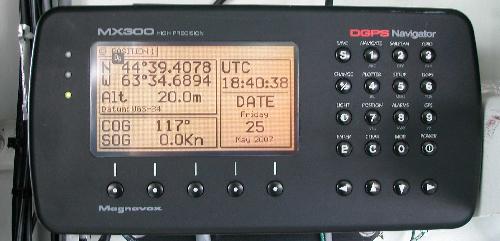 |
| Magnavox MX300 DGPS receiver. In 1994 Leica acquired MX
Marine Group from Magnavox and in 1997 acquired the Ap Navigator business
from Phillips. With this acquisition, MX Marine is able to serve the high
end leisure market with the Ap brand products in addition to the
Type approved market with the MX brand. On 29th April 2005, Brunswick New
Technologies, Inc. acquired the MX Marine business from Leica Geosystems.
MX Marine is currently owned by Navico, Inc., who acquired the business
in March 2007. (Photo by Richard Bungay) |
SAILOR RT-2047
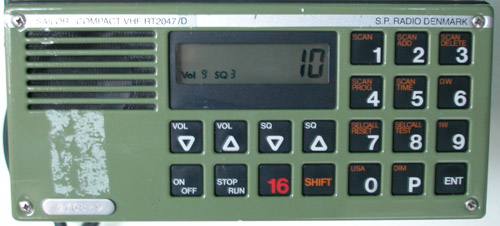 |
| Sailor Model RT2047 VHF radio. The RT2047 operates with an output of
25 W on all international maritime channels, plus up to 60 private channels.
Dual Watch selective calling, and scanning facilities are standard features.
(Photo
by Richard Bungay) |
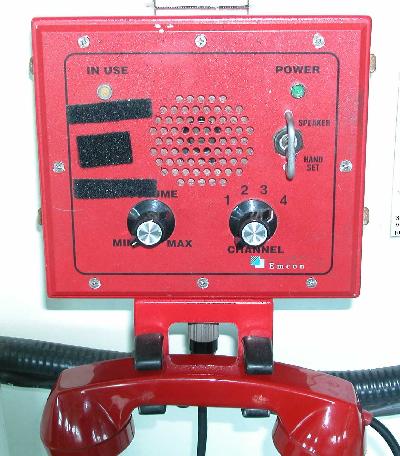 |
| Remote control unit for VHF radio which is fitted on the
bridge. (Photo by Richard Bungay) |
Contributors and Credits:
1) Taiyo Musen Co. Ltd L1520 photo http://www.taiyomusen.co.jp/EHome/eindex.html
2) Sea Tel 4006 . http://www.seatel.com/?area=products;page=wavecall4006
3) Tim Cotey - Coxswain, HMCS WHITEHORSE (March
2007) <Cotey.TL(at)forces.gc.ca>
4) DND. Kingston Class "Welcome Aboard HMCS [name]
pamphlet.
5) Petty Officer Rick Bungay, Chief Engineer HMCS SUMMERSIDE.
<rbungay(at)hfx.eastlink.ca>
6) Trimble http://www.trimble.com/sentinel_faq.asp
7) Trimble http://www.trimble.com/galaxyland.html
8) Knudsen Engineering http://www.knudsenengineering.com/html/products/320M/320M-specs.htm
9) Sandy McCLearn <smcclearn(at)ns.sympatico.ca>
10) Richard Bungay <rbungay(at)hfx.eastlink.ca>
11) Gus Davidson <Gus.Davidson(at)phoneexperts.com>
12) MX Marine http://www.mx-marine.com/about_us/index.html
13) ICOM M601 - http://www.icom.co.jp/world/products/marine/m601/index.html
14) Ian Baker VE3OZN <seawolf2(at)sympatico.ca>
Back to Kingston Class
Oct 18/11









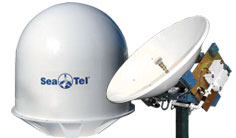 Photo
# Radio Ant 9 . The WaveCall 4006 is a 1-meter Ku-Band maritime VSAT
antenna whose efficiency is better than 70% across the transmit and receive
bands and is ideal for vessels that require "always-on" broadband satellite
communications. The 4006 is suitable for file and image transfer, video
conferencing, e-mail, Virtual Private Networks (VPNs), and database backup.
Photo
# Radio Ant 9 . The WaveCall 4006 is a 1-meter Ku-Band maritime VSAT
antenna whose efficiency is better than 70% across the transmit and receive
bands and is ideal for vessels that require "always-on" broadband satellite
communications. The 4006 is suitable for file and image transfer, video
conferencing, e-mail, Virtual Private Networks (VPNs), and database backup.











